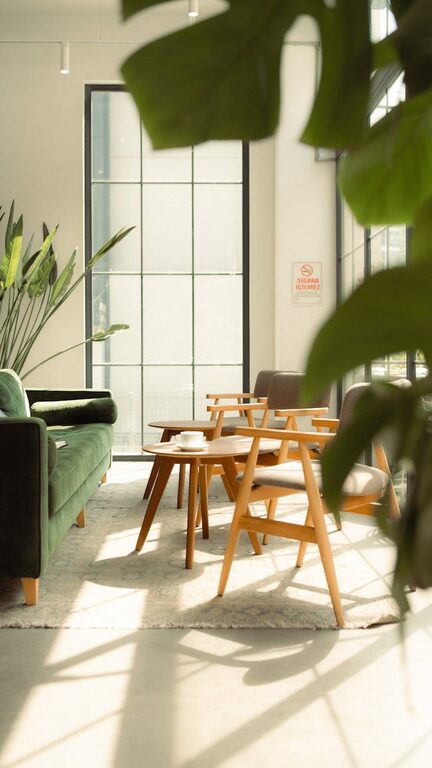Living in a noisy environment at home can be stressful and distracting, whether the sounds come from outside traffic, household appliances, or lively neighbors. Fortunately, reducing noise doesn’t always require expensive renovations or complicated fixes. There are many simple ways to make your home quieter and more peaceful.
In this post, we’ll explore practical and budget-friendly solutions to help you minimize noise at home and enjoy a calmer atmosphere.
Why Reducing Noise at Home Matters
Noise pollution can have a significant impact on your mental well-being, sleep quality, and productivity. Excessive sounds can cause stress, fatigue, and trouble concentrating. Creating a quieter space contributes to relaxation and comfort, enhancing your overall quality of life.
Now, let’s look at some straightforward strategies you can use to reduce noise in different parts of your home.
1. Use Soft Furnishings to Absorb Sound
Hard surfaces like tiles, glass, and bare walls reflect sound waves, making rooms noisier. Adding soft furnishings helps absorb those sound waves and reduce echoes.
– Rugs and Carpets: Place area rugs or carpets on hard floors to soften noise from footsteps and reduce sound bouncing.
– Curtains: Hang thick, heavy curtains over windows to block outside noise and dampen sound inside.
– Upholstered Furniture: Chairs, sofas, and cushions can absorb sound and reduce reverberation.
– Throw Pillows and Blankets: These add softness and help muffle everyday noises.
2. Seal Gaps and Cracks in Doors and Windows
Noise often enters rooms through tiny gaps around windows and doors. Sealing these openings can significantly cut down on unwanted sounds.
– Weatherstripping: Apply adhesive weatherstripping tape around door frames and window sashes to close gaps.
– Door Sweeps: Attach a door sweep to the bottom of doors to prevent sounds from coming underneath.
– Caulk Cracks: Use caulk to fill any visible cracks in window frames or walls.
– Double-Glazed Windows: If possible, upgrade to double-glazed windows, which offer better sound insulation than single panes.
3. Rearrange Furniture Strategically
How you arrange your furniture can influence how sound travels in a room.
– Place bookshelves or large furniture against walls shared with noisy neighbors or next to noisy appliances.
– Fill empty corners with soft pieces like poufs or cushions to reduce echo.
– Position beds and seating areas away from windows or doors that let in external noise.
4. Add Soundproofing Materials
For more intensive noise reduction, consider adding soundproofing materials to your walls, ceilings, or floors.
– Acoustic Panels: These panels absorb sound and can be mounted on walls or ceilings.
– Soundproofing Foam: Peel-and-stick foam tiles work well for home offices or music rooms.
– Mass Loaded Vinyl (MLV): This heavy, flexible material can be added to walls to block noise.
– Underlayments: Soundproofing underlayments beneath carpets or flooring cut down impact noise.
5. Reduce Noise from Appliances and Electronics
Household appliances can generate a surprising amount of noise.
– Choose Quiet Models: When buying appliances like vacuums, dishwashers, or air conditioners, look for quieter options.
– Regular Maintenance: Keep appliances clean and well-maintained to prevent them from getting louder over time.
– Use Rugs Under Machines: Placing a rug or foam mat under washing machines or dryers can reduce vibration noise.
– Turn Off Electronics: Switch off devices completely instead of leaving them on standby to minimize background noise.
6. Incorporate White Noise or Nature Sounds
Interestingly, adding a consistent, gentle background noise can help mask disruptive sounds and make your home feel quieter.
– White Noise Machines: These devices produce soothing sounds that cover up sudden noises.
– Fans or Humidifiers: They offer a subtle, calming hum that can drown out other distractions.
– Nature Sound Apps: Apps that play rainfall, ocean waves, or forest sounds can be relaxing and help mask outside noise.
7. Use Plants to Help Absorb Sound
Indoor plants not only improve air quality and decor but can also contribute to noise reduction.
– Plants with large, thick leaves help absorb sound waves.
– Placing several plants near windows or along walls can reduce noise reflections.
– Popular sound-absorbing plants include Rubber Plants, Ficus, and Boston Ferns.
Final Thoughts
Reducing noise at home is achievable with some thoughtful adjustments and additions. Start with small steps like adding rugs or sealing door gaps, then explore more advanced options if needed. A quieter home environment not only boosts comfort but also supports better rest and focus.
Try these tips to create a peaceful sanctuary that feels calm and inviting, no matter what the noise outside might be.
—
Feel free to share your own noise-reducing ideas or ask questions in the comments below!

